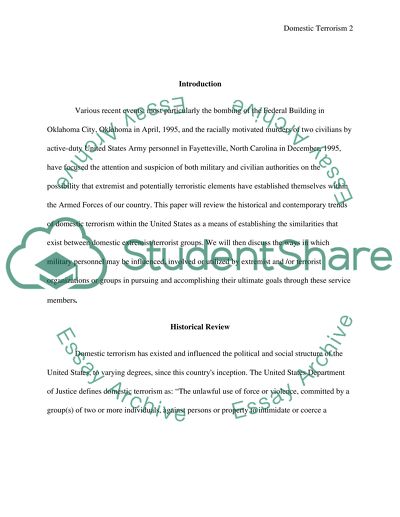Cite this document
(Relation between Domestic Terrorism and the US Armed Forces in the Mid Essay, n.d.)
Relation between Domestic Terrorism and the US Armed Forces in the Mid Essay. Retrieved from https://studentshare.org/military/1542695-cj-352-domestic-terrorism
Relation between Domestic Terrorism and the US Armed Forces in the Mid Essay. Retrieved from https://studentshare.org/military/1542695-cj-352-domestic-terrorism
(Relation Between Domestic Terrorism and the US Armed Forces in the Mid Essay)
Relation Between Domestic Terrorism and the US Armed Forces in the Mid Essay. https://studentshare.org/military/1542695-cj-352-domestic-terrorism.
Relation Between Domestic Terrorism and the US Armed Forces in the Mid Essay. https://studentshare.org/military/1542695-cj-352-domestic-terrorism.
“Relation Between Domestic Terrorism and the US Armed Forces in the Mid Essay”. https://studentshare.org/military/1542695-cj-352-domestic-terrorism.


